V1432 Aql: an asynchronous polar
Observed: 7, 12, 13, 14, 15 July, 5, 18 Aug, 5, 15 Sept 2007
Michel Bonnardeau
16 Aug 2007
Updated 20 Aug, 12, 18 Sept 2007
Revised 1 Sep 2008 (analysis), 19 Feb 2012 (new comparison star and photometry)
Abstract
Light curves for this magnetic cataclysmic system are presented. They show the eclipses and the spin modulation.
Introduction
V1432 Aql is a cataclysmic system, that is a binary with an accreting white dwarf. It shows eclipses and the orbital period is Porb=12116.282s=3.37h (Mukai et al (2003)). It is a bright X-ray source and the white dwarf is strongly magnetized.
According to Mukai et al (2003), the white dwarf spin period is almost equal to the orbital period (an asynchronous polar). The spin period is Prot=12146.345s, slightly larger than the orbital period, and fastly decreasing with dProt/dt=-9*10^-9. There is a beat of ~50d between the orbital and spin modulations.
A CBA target in 2007.
Observations
The observations were carried out with a 203mm SC telescope, a Clear filter and a SBIG ST7E camera (KAF401E CCD). 345 images were used, each with an exposure of 200s.
For the differential photometry, the comparison star is GSC 5728-00410 with an assumed unfiltered magnitude of 11.950. The check star is GSC 5728-01558 with a measured magnitude of 15.051+/-0.020+/-0.034 where the first +/- is the average 1-sigma statistical uncertainty and the second one is the standard deviation.
An example of a light curve:

Red: V1432 Aql, Blue: the check star shifted by +2 mag. The error
bars are +/- the 1 sigma statistical uncertainties. There is an eclipse
near 297.507.
Phase analysis
Folding the data with the orbital period Porb and the origin Torb=2,449,199.693HJD
(Mukai et al (2003)) gives the phase plot:
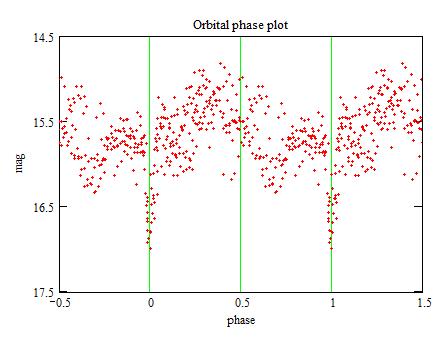
The eclipses are at phases 0 and 1.
With the spin period Prot and the origin Trot=2,454,313.629HJD:
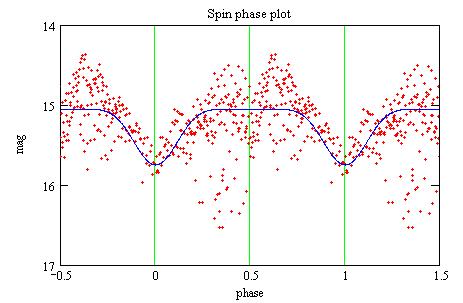
The blue line is a fit with the Hrot function (see below).
With this Trot, there is a shift from the Mukai et al (2003)'s ephemeris:
the modulation is too late by 5750s. This may be explained by the derivative
of the period being slightly stronger than the ephemeris.
The spin modulation may be fitted with the function:

with Arot=15.55
and Brot=0.7.
All the light curves as a function of the orbital phase:
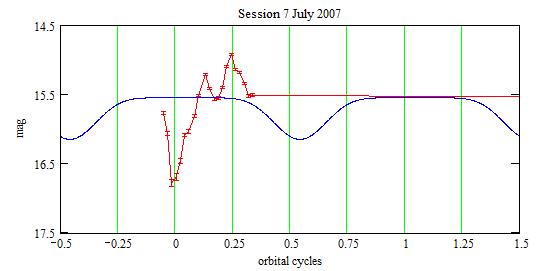
The blue line is the Hrot function.
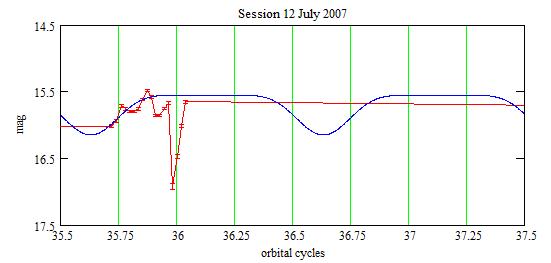
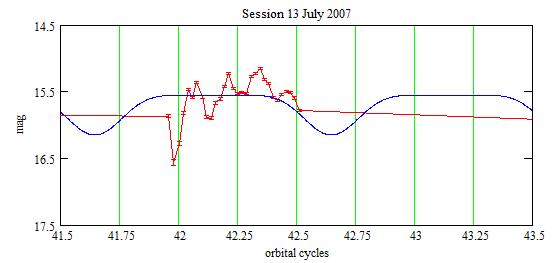
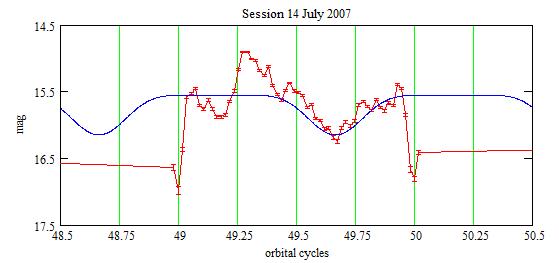
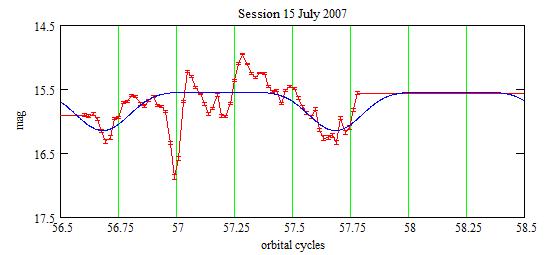
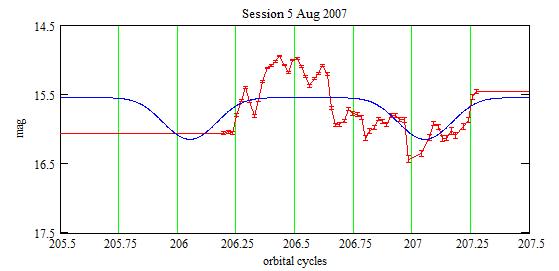
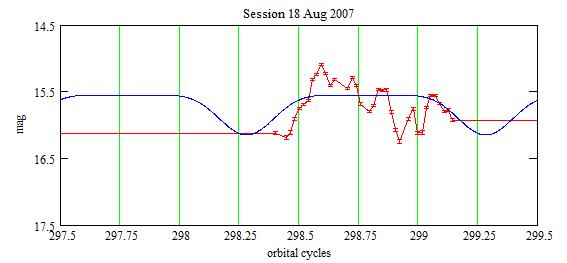
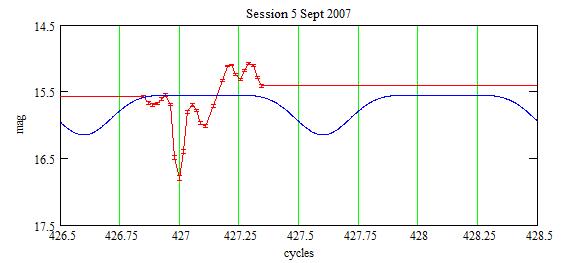
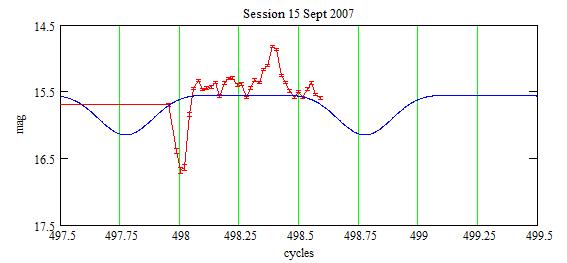
References
Mukai K., Hellier C., Madjeski G., Patterson J., Skillman D. (2003) ApJ 597 479.
Technical notes
Telescope and camera configuration.
Computer and software configuration.
|
|
|||
|
|||
|
|
|||
|
|
|||
|
|||
